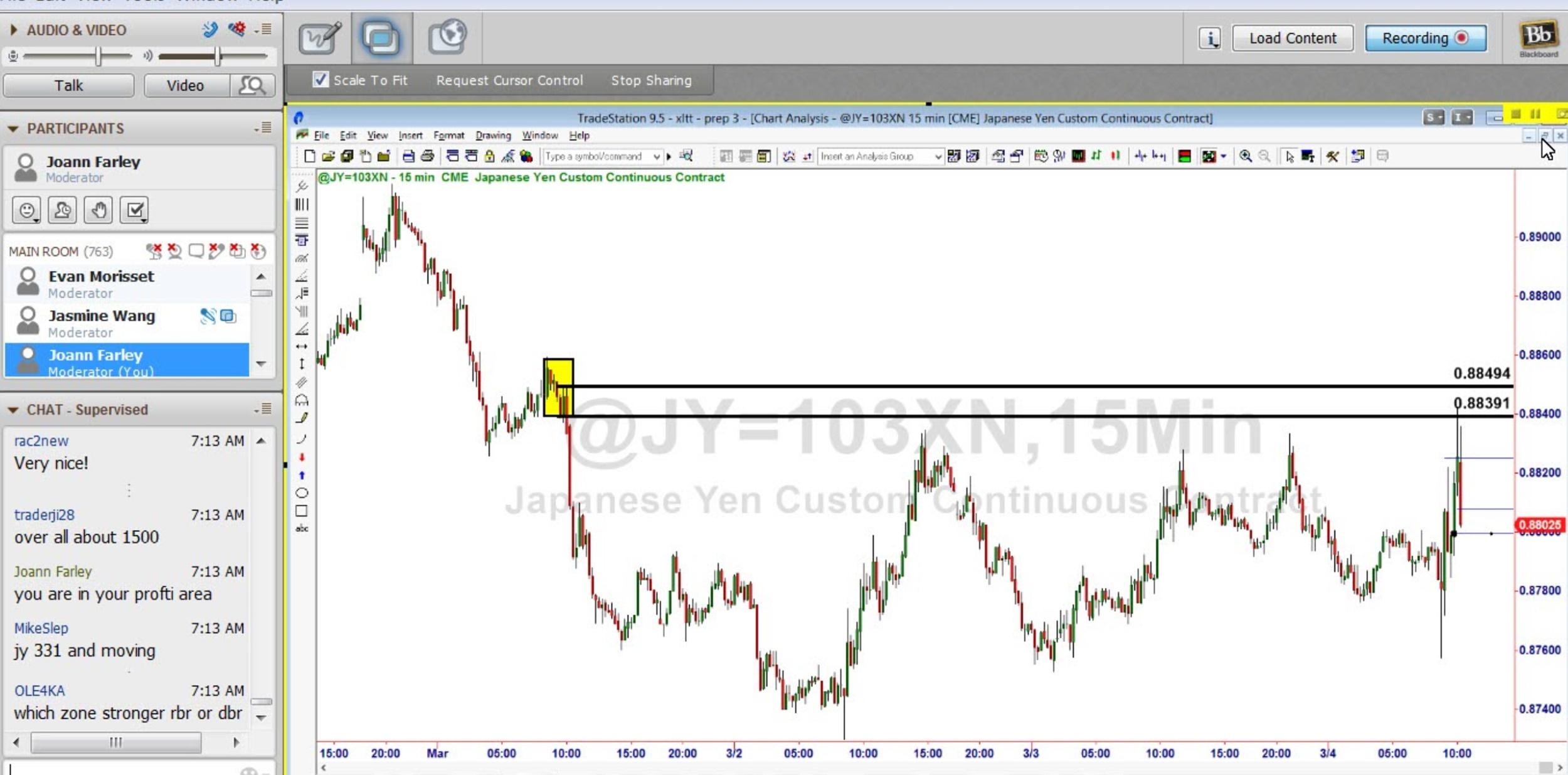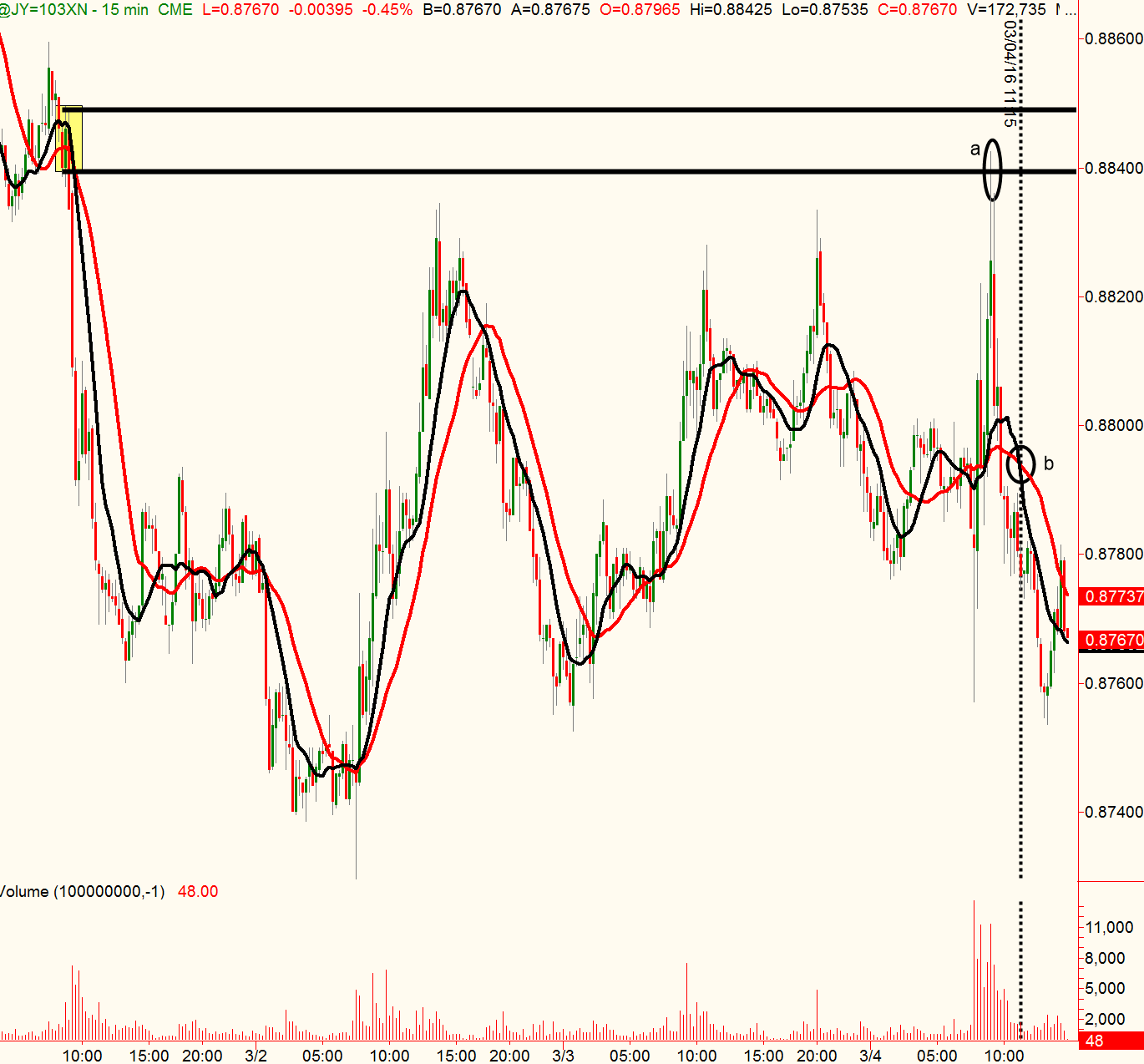![]()
Is your trading and investing producing below average returns? If so, there may be a simple reason. You may be using a tool that ensures average or below average returns and not even know it. The “Moving Average” is a tool that is talked about in almost every trading book that has ever been written. Every day, those on TV, CNBC, Bloomberg and other media are telling us where the S&P and other key markets are in relation to the 200 day moving average, for example. Every charting package on the planet comes with every possible configuration of a moving average for you to use. Because of all this, moving averages must be one of the most important tools for traders and investors, right? You start to think that it must be impossible to make money in the markets without using moving averages. When we take a deeper look into the purpose and result of using moving averages, it becomes apparent that not only do you not need to use them but, more importantly, they can actually hurt you if you don’t understand the risk that comes from using them as a primary buy and sell decision making tool. That is the focus of this piece.
Instead of going through many charts to find the perfect picture to use as an example to illustrate my logic, I like to use real trades taken in our live trading rooms, the Extended Learning Track (XLT). The other day, in one of those live trading sessions with XLT members, we identified a supply level in the Yen (yellow shaded area). During that session we noticed that price was rallying to that level, offering us a low risk, high reward and high probability shorting opportunity. Once price rallied to the supply level, the plan was to sell short with a protective buy stop just above the level to manage the risk with one profit target below.
March 4, 2016 – XLT Income Trade
The trade met entry and then declined for a short term trading income profit. Now, let’s go over the same trading opportunity but instead of applying our rule based market timing strategy, let’s use a moving average which, again, is a tool talked about in almost every trading book ever written. Most people are taught to buy when the moving average turns higher or sell when it turns lower. Many people use a moving average cross, entering the position on the cross of a moving average. As you can see below, by the time the moving average turns lower and crosses (circle b), price has declined quite a bit already which means high risk and lower reward if you use your moving average as a sell signal. Furthermore, notice that the moving average was sloping up when our rules gave me the sell signal that we actually took (circle a). Also, notice that the short term trend of price was up when our strategy gave us the low risk sell signal. Have you ever read a trading book that said to sell in an uptrend? Of course not, yet this is the action you take when you properly buy and sell anything in life, don’t you? This is exactly how you make money trading as well, but the trading books teach you to do the opposite which is a very flawed school of thought. Many of the traders following indicators such as moving averages are really smart people who have the best of intentions; they’ve just been taught wrong and given a faulty strategy. It’s not rocket science; traditional technical analysis can be overly complex, often causing “paralysis by analysis”. This is why we focus on teaching students our simple rule based strategy using the principals of supply and demand aimed at helping them find “real” low risk, high reward and high probability trades.
Waiting for the moving average to turn lower before shorting certainly gives you confirmation, but at the cost of extremely high risk and lower reward. Furthermore, that confirmation that so many people seek and desire is an illusion because you still don’t know exactly what price will do next; this is all about probability, risk and reward.
Yen Trade with 10 and 20 – Period Moving Average
Again, there are so many books on trading and most people start the learning process by reading the trading books, yet the vast majority of traders and investors fail when it comes to achieving their financial goals. For the most part, the books say the same thing and teach the same conventional concepts. Specifically, most of what those books teach is conventional technical analysis including indicators and oscillators such as Stochastics, Mac-D, moving averages and so on. Here is the problem… Conventional technical analysis is a lagging school of thought that leads to high risk, low reward and low probability trading and investing. All indicators are simply a derivative of price, meaning they lag price. By the time they tell you to buy or sell, the low risk, high reward opportunity has passed. They have you buying after a rally in price and selling after price has already declined. This is NOT how Wall Street thinks, or any successful buyer and seller of anything. At Online Trading Academy, we don’t use conventional indicators, oscillators or chart patterns that you read about in the trading books as primary decision making tools because adding any decision making tool that lags price to our analysis process only increases risk and decreases reward. Why would we ever want to do that? I know the information in trading books has been around for many decades but that doesn’t mean it works or helps people. Like learning anything else in life, there is the book version way of learning it and real world learning. My goal in this piece is not to beat up books and theories; it is simply to open your mind to a lower risk, higher reward way of trading and investing.
Give it some thought; do your strategy rules have you only buying when price is above a rising moving average and selling below a declining moving average like many books suggest? If so, this means you are always paying above average prices when buying and receiving below average prices when selling, which is likely the last thing you want to be doing unless you like handing your money to others. When you embark on the trading journey make sure you have the right road map. Without it, you may be walking east and west trying to reach the North Pole and not even know it…
Hope this was helpful, have a great day.
Note: All information on this page is subject to change. The use of this website constitutes acceptance of our user agreement. Please read our privacy policy and legal disclaimer. Opinions expressed at FXstreet.com are those of the individual authors and do not necessarily represent the opinion of FXstreet.com or its management. Risk Disclosure: Trading foreign exchange on margin carries a high level of risk, and may not be suitable for all investors. The high degree of leverage can work against you as well as for you. Before deciding to invest in foreign exchange you should carefully consider your investment objectives, level of experience, and risk appetite. The possibility exists that you could sustain a loss of some or all of your initial investment and therefore you should not invest money that you cannot afford to lose. You should be aware of all the risks associated with foreign exchange trading, and seek advice from an independent financial advisor if you have any doubts.
Editors’ Picks
AUD/USD pressures as Fed officials hold firm on rate policy

The Australian Dollar is on the defensive against the US Dollar, as Friday’s Asian session commences. On Thursday, the antipodean clocked losses of 0.21% against its counterpart, driven by Fed officials emphasizing they’re in no rush to ease policy. The AUD/USD trades around 0.6419.
EUR/USD extends its downside below 1.0650 on hawkish Fed remarks

The EUR/USD extends its downside around 1.0640 after retreating from weekly peaks of 1.0690 on Friday during the early Asian session. The hawkish comments from Federal Reserve officials provide some support to the US Dollar.
Gold price edges higher on risk-off mood hawkish Fed signals

Gold prices advanced late in the North American session on Thursday, underpinned by heightened geopolitical risks involving Iran and Israel. Federal Reserve officials delivered hawkish messages, triggering a jump in US Treasury yields, which boosted the Greenback.
Runes likely to have massive support after BRC-20 and Ordinals frenzy

With all eyes peeled on the halving, Bitcoin is the center of attention in the market. The pioneer cryptocurrency has had three narratives this year already, starting with the spot BTC exchange-traded funds, the recent all-time high of $73,777, and now the halving.
Is the Biden administration trying to destroy the Dollar?

Confidence in Western financial markets has already been shaken enough by the 20% devaluation of the dollar over the last few years. But now the European Commission wants to hand Ukraine $300 billion seized from Russia.
RECOMMENDED LESSONS
Making money in forex is easy if you know how the bankers trade!
Discover how to make money in forex is easy if you know how the bankers trade!
5 Forex News Events You Need To Know
In the fast moving world of currency markets, it is extremely important for new traders to know the list of important forex news...
Top 10 Chart Patterns Every Trader Should Know
Chart patterns are one of the most effective trading tools for a trader. They are pure price-action, and form on the basis of underlying buying and...
7 Ways to Avoid Forex Scams
The forex industry is recently seeing more and more scams. Here are 7 ways to avoid losing your money in such scams: Forex scams are becoming frequent. Michael Greenberg reports on luxurious expenses, including a submarine bought from the money taken from forex traders. Here’s another report of a forex fraud. So, how can we avoid falling in such forex scams?
What Are the 10 Fatal Mistakes Traders Make
Trading is exciting. Trading is hard. Trading is extremely hard. Some say that it takes more than 10,000 hours to master. Others believe that trading is the way to quick riches. They might be both wrong. What is important to know that no matter how experienced you are, mistakes will be part of the trading process.



